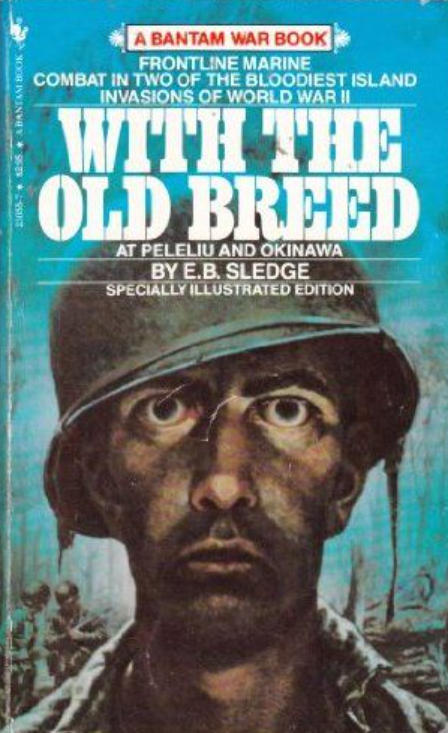History Archives
July 18, 2021
The Same Old Weary Shuffling

I don’t believe anyone of discernment can fail to be moved by the misery, horror and hardship endured by the men who fought the Pacific War in the 1940s. Particularly the US Marines (and Army) against the Japanese Army; these two fearsome fighting forces confronted each other, amidst a supremely punitive environment, with a level of ferocity for which it is difficult to find historical parallel.
There was cruelty and courage in superabundance, and tenacity in the teeth of unimaginable privation. The extreme scarcity of acts of surrender speaks to the bitterness of the combat and the reciprocal hatred that impelled it.
And yet, somehow our two nations put the bitterness and hatred behind them. And rather quickly at that. A mere fifteen years after the war, Japan and the US signed a treaty which began by declaring a mutual desire “to strengthen the bonds of peace and friendship . . . and to uphold the principles of democracy, individual liberty, and the rule of law.” The compact founded upon that treaty stands today, by some measures, as the most durable alliance between two great powers in all of history.
Put more whimsically, will any American athlete, upon touching down in Japan for these fraught Olympic Games, or Japanese athlete, seeing the Americans land, spare even a moment to ponder what happened on Guadalcanal almost eighty years ago?
Not a bad record of reconciliation for (a) an Empire which instilled such fanaticism in her soldiers that some of them maintained solitary guerilla operations, on godforsaken island redoubts, for decades after the war ended; and (b) a Republic agreed by all her forward-thinking elites (at least since, oh, last summer) to have been founded on racist principles and systems.

Below are some harrowing excerpts from E. B. Sledge’s memoir of his combat tour as a Marine in the Pacific War, With the Old Breed. In simple, direct prose undergirded by a palpable generosity of spirit and unmarred by militaristic hauteur, Sledge supplies a narrative of his experience justly deserving of its reputation as one of the best Pacific War memoirs. You don’t need to be a military history buff to profit from the book.
I’ll conclude this prolegomenon with a remark tailored to Lydia and her readers: notice how Sledge’s memory attaches so often to features of the physical world? In a strange way it reminds one of a certain Evangelist, whose own historical narrative of great events is so ill-treated by scholars, that his sturdy Hebrew name has been debased into the ridiculous pseudo-Teutonic jargon of “Johannine community.” Saint John the Apostle, too, had an eye for physical features, which he tended to convey in simple, direct prose. He didn’t fight a bloody war (so far as we know), or endure the trauma of prolonged shelling; but he sure witnessed some bloody events, and he endured a brutal exile, where he was traumatized by a Vision of something rather like a spiritual shelling. As Lydia rightly says, this emphasis on physical detail is a mark of authenticity. If Sledge’s book should manage to abide for another two thousand years, no doubt pompous 41st century scholars will speak of it as, “emanating from the Sledgehammer community” and asseverate that, because it’s “little concerned with actual events” but rather, “general theological themes of the war,” it only “contains history” and isn’t actually a historical document.
+ + + + +
The next morning, again with the help of tanks and amtracs, our battalion took most of the remainder of Ngesebus. Our casualties were remarkably low for the number of Japanese we killed. In midafternoon we learned that an army unit would relieve us shortly and complete the job on the northern end of Ngesebus.
Our mortar section halted to await orders and dispersed among some open bushes. In our midst was the wreckage of a Japanese heavy machine gun and the remains of the squad that had been wiped out by Company K. The squad members had been killed in the exact positions to be occupied by such a squad "according to the book."
At first glance the dead gunner appeared about to fire his deadly weapon. He still sat bolt upright in the proper firing position behind the breech of his machine gun. Even in death his eyes stared widely along the gun sights. Despite the vacant look of his dilated pupils, I couldn't believe he was dead. Cold chills ran along my spine. Gooseflesh tickled my back. It seemed as though he was looking through me into all eternity, that at any instant he would raise his hands — which rested in a relaxed manner on his thighs — grip the handles on the breech, and press the thumb trigger. The bright shiny brass slugs in the strip clip appeared as ready as the gunner, anxious to speed out, to kill, and to maim more of the "American devils." But he would rot, and they would corrode. Neither he nor his ammo could do any more for the emperor.
